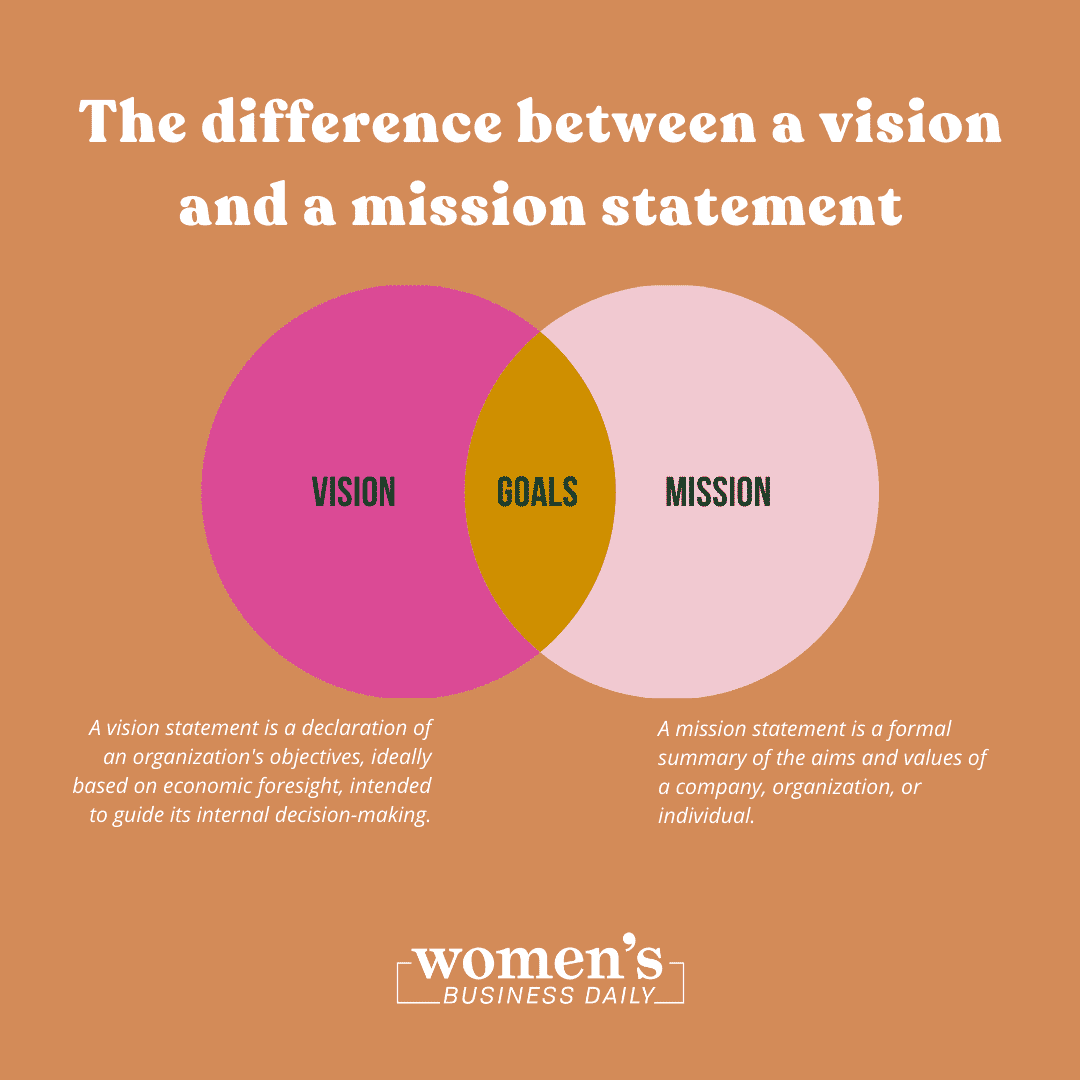While coming up with verbiage for something as lofty as a “vision statement” might seem overwhelming, really, it’s quite simple; every business begins with a vision.
Every company starts out as an idea in someone’s head, and that idea is the ideal version of what that business could be if it had the right leaders, funding, and structure. Writing your company vision statement helps give you parameters for what success looks like if everything operated according to plan.
So let’s go over some tips to see how you can turn that mental picture in your head into a functioning vision statement so you can work towards elevating your business to that goal.
The Basics
After you named your business, it’s time to start thinking about your inspiration behind the business. To create a vision statement, think back to why you started your business in the first place.
- Did you want to fill a void for a service in your area? If there were no landscapers in your community, your vision statement could be something about bringing superior service and affordable lawn care to the area.
- Did you have an idea no one ever imagined before? If your idea answers a problem that has never before been solved, talk about how you will make the world a better place through your product or service.
- Do you have a new approach to a business process to improve productivity? If your novel way of approaching a problem makes the product more affordable, talk about how this will alter the market for the product and make it more accessible to those who previously could not afford it.
- Are you lead by a sacred mission beyond profit? If a large part of your business model is raising money for a cause, write about how you’re making the world a better place through your charitable pursuits.
- Is there a cause you’re especially committed to? If your goal is to run your business sustainably with minimal impact on the environment, try writing a vision statement that emphasizes how exactly you’re committing your business to sustainable practices.
When working on the vision statement, focus on what makes your business special. How are your product and service different than your competitors? Dream big when imagining what your business could be if it lived up to its full potential.
Consult all your board members to see what their vision for the company includes. Multiple minds considering the prompt will help you all develop the best vision statement possible.
The Difference Between a Vision and Mission Statement
So if a vision statement asks the question, “what would you like to achieve in the future,” what does a mission statement do? Are they the same thing? Why do they both matter?
Mission and vision statements work hand in hand; your vision is your ideal for tomorrow, and your mission is how you take steps today to get there. The mission statement is more in-depth; it’s a step-by-step process to help you build up your business to achieve your long-term goals.
Come up with a strategic plan on how you can take action steps towards making that vision a reality.
You may not have all the answers yet, but considering how you will tackle these problems and obstacles is all a part of the planning process. Your mission statement can be a fluid document. Your plan on how to achieve your goals will change as you take what’s on the paper and apply it to your business in real life. As you make adjustments to your strategy, update the document with your new best practices.

Strong Examples
Looking for examples of companies with strong vision statements? Here are three very different businesses to show you the range of what a vision statement can look like.
- Ikea: To create a better everyday life for the many people. Ikea mentions in their vision statement not only their commitment to bettering the lives of their customers but their workers and suppliers as well. They want to be more than a company that makes furniture. They want to positively impact everyone along every step of the process. From helping to improve the communities they source their materials from to helping customers live more sustainable lives, they want to leave a positive impact on people and the earth.
- TEDTalk: Ideas worth spreading. TED, or Technology, Entertainment, and Design, is a non-profit that aims to spread ideas through talks usually less than 18 minutes from thought leaders across the spectrum of topics. They expanded far beyond their original three disciplines, and you can find a TEDTalk on almost anything. They make these talks accessible through free channels such as YouTube and offer them in over 100 languages.
- Warby Parker: Buying eyewear should leave you happy and good-looking, with money in your pocket. On their history page, Warby Parker talks about how one of their founders lost their glasses on a backpacking trip, and because glasses were so expensive, he just went without glasses for the first semester of grad school. Their business model includes no physical stores, so they can cut out the cost of overhead to decrease their prices so more people can afford glasses. Their vision informs their business model, demonstrating why it is so important to determine your vision before you begin.
- Microsoft: A computer on every desk. This vision statement came from Bill Gates and Paul Allen early on in their creation of Microsoft. They wanted to make home computers accessible and affordable to everyone. Considering how expensive computing was when they entered the scene, it’s miraculous how accessible home computers have become today. The internet and access to it are not only for the top 1% anymore.
These examples are businesses at the forefront of their industry. Their vision statements all center on what sets them apart. Ikea’s main goal isn’t to make furniture. They use furniture to better the lives of the people around them and promote sustainable practices to help the planet.
Tips to Writing a Great Vision Statement
So now you know just how important a vision statement is, here are some best practices on how to write a really effective one.
- Stay concise. Vision statements are like the motto that informs the way your employees work and the way your clients view your business. Make it short and sweet: no longer than one sentence. The best vision statement? Something you feel so strongly about that you would slap it on a tee shirt.
- Be aspirational. Your vision statement should be something lofty, but not impossible.
- Be clear, but be broad. While you should avoid being vague, the spirit of the statement should still encompass your business even if you change direction a little.
- Make it time-sensitive. You should have a set date by which you achieve the goals you’ve set. Once you meet the vision you established, you can set a new vision that builds on the one you’ve already achieved.
- Inspire your company. When looking at your vision statement, your employees, investors, and board members should feel inspired to work towards that dream.
The Heart of Your Motivation
Every for-profit company exists to make money. That’s a given. If that’s the only reason you’re starting a business, you won’t get too far. Your vision statement speaks to the heart of your motivation to begin your business.
- How does your business implement solutions in your community?
- Why should anyone care that your company exists?
- What sets you apart from everyone else in your industry?
- What novel approaches do you bring to your industry?
- How does your company make the world a better place?
- Who do you care most about? Your customers and their satisfaction? Your stockholders and the profit margin? Your employees and their livelihoods? Who are you doing business for, first and foremost?
- How does your company make the world different? Is it in a good way?
You are what sets your business apart, so only you can determine where you want to see your business headed. Figure out what the heart of your business is and how you can turn that unique element into the driving force of your business. This is what will propel you into the future.
Author, Artist, Photographer.
Sarah Margaret is an artist who expresses her love for feminism, equality, and justice through a variety of mediums: photography, filmmaking, poetry, illustration, song, acting, and of course, writing.
She owns Still Poetry Photography, a company that showcases her passion for capturing poetic moments in time. Instead of poetry in motion, she captures visual poetry in fractions of a second, making cherished keepsakes of unforgettable moments.
She is the artist behind the Still Poetry Etsy shop, which houses her illustrations and bespoke, handmade items. She is the author of intricacies are just cracks in the wall, a narrative poetry anthology that follows a young woman discovering herself as she emerges from an abusive relationship.
- Sarah Margaret Henryhttps://www.womensbusinessdaily.com/author/sarah-margaret-henry/
- Sarah Margaret Henryhttps://www.womensbusinessdaily.com/author/sarah-margaret-henry/
- Sarah Margaret Henryhttps://www.womensbusinessdaily.com/author/sarah-margaret-henry/
- Sarah Margaret Henryhttps://www.womensbusinessdaily.com/author/sarah-margaret-henry/






